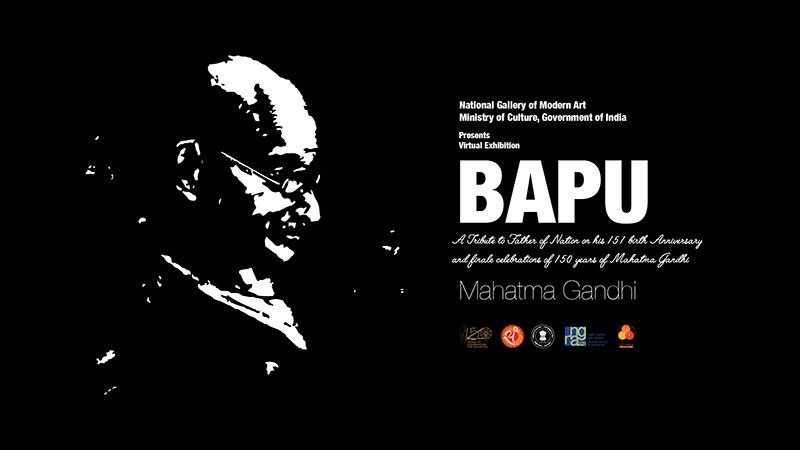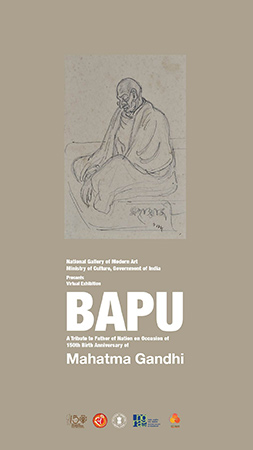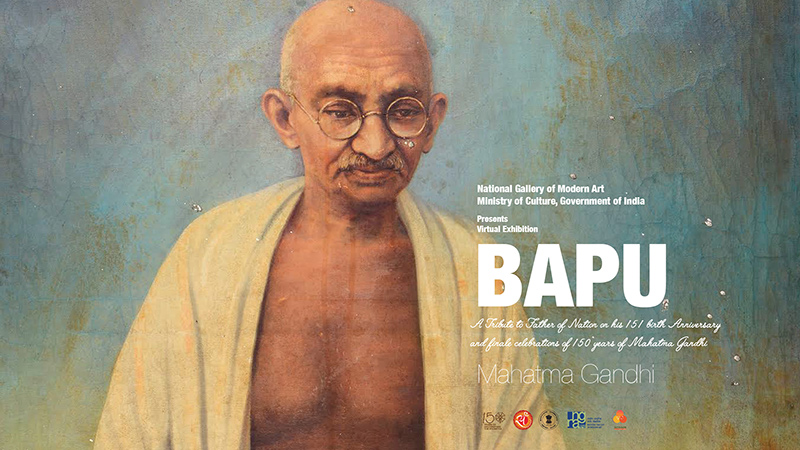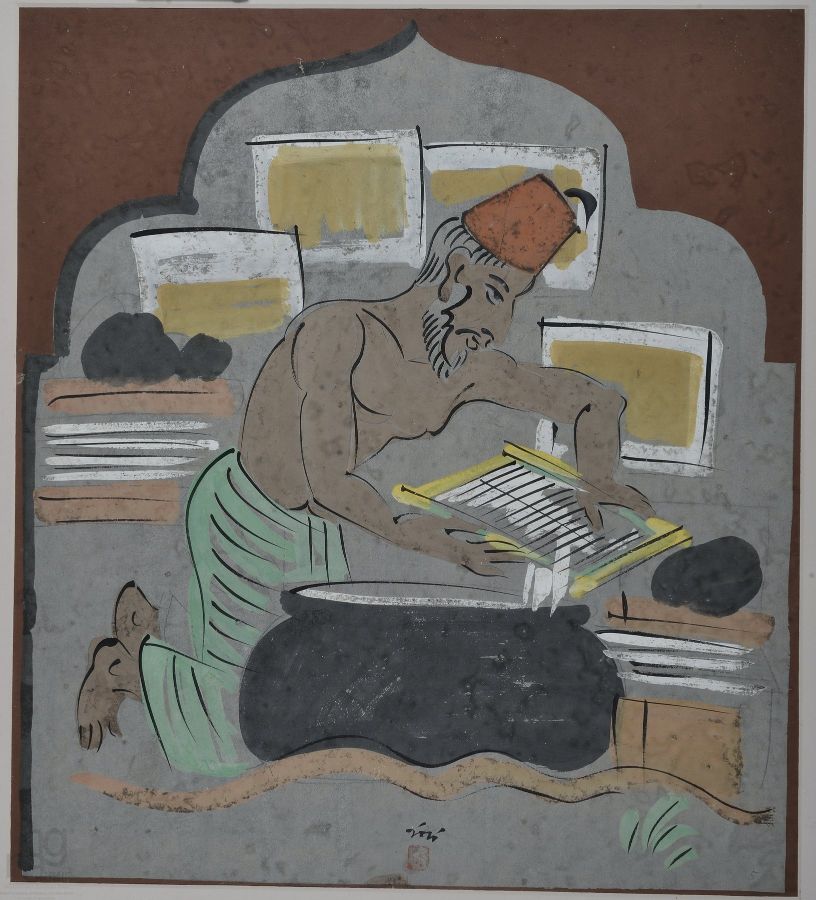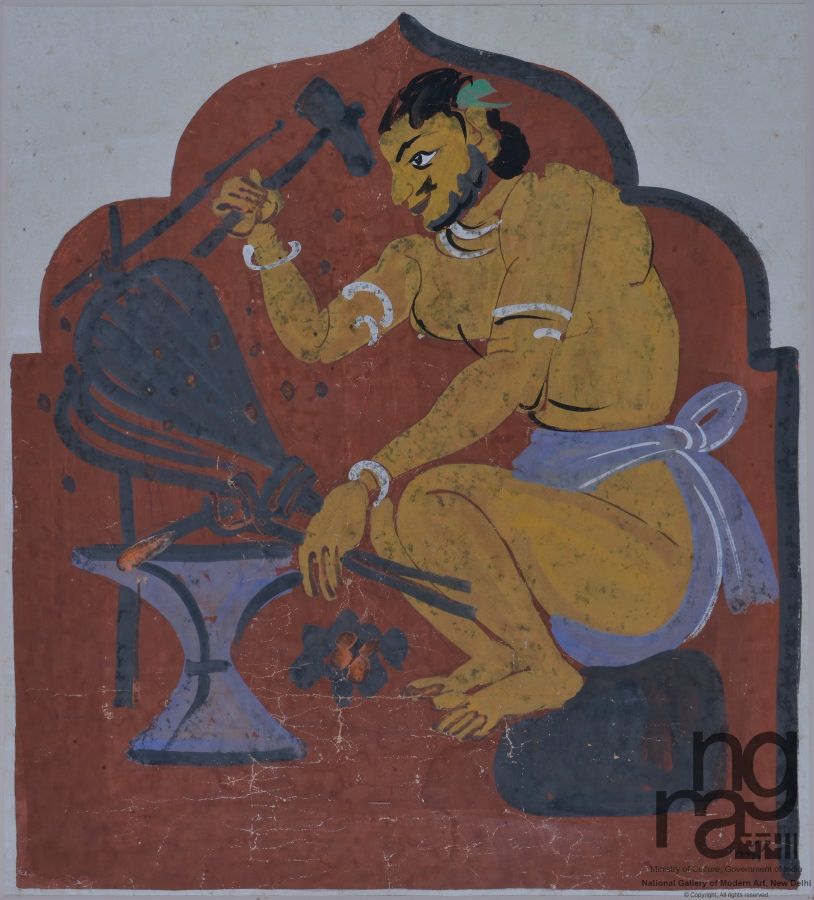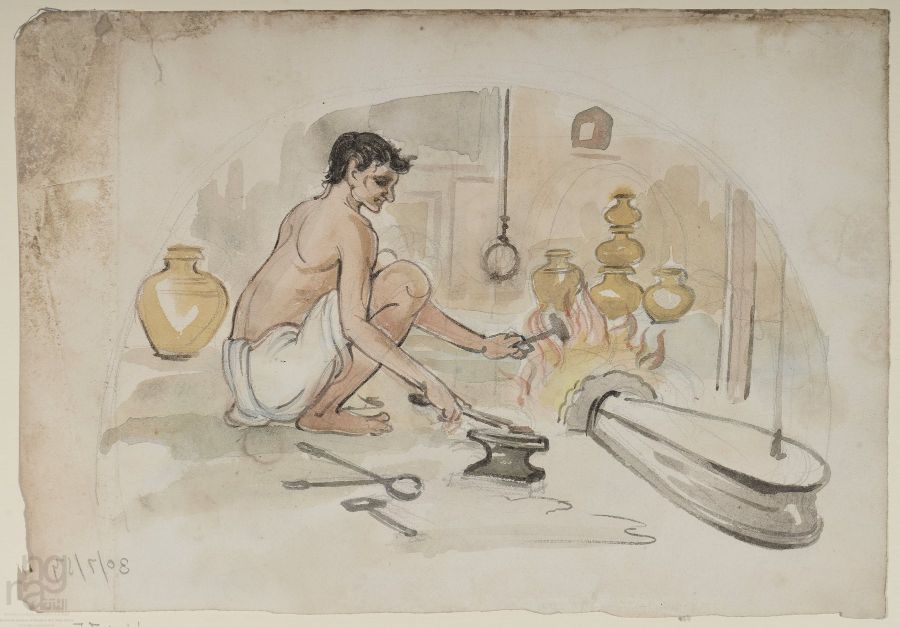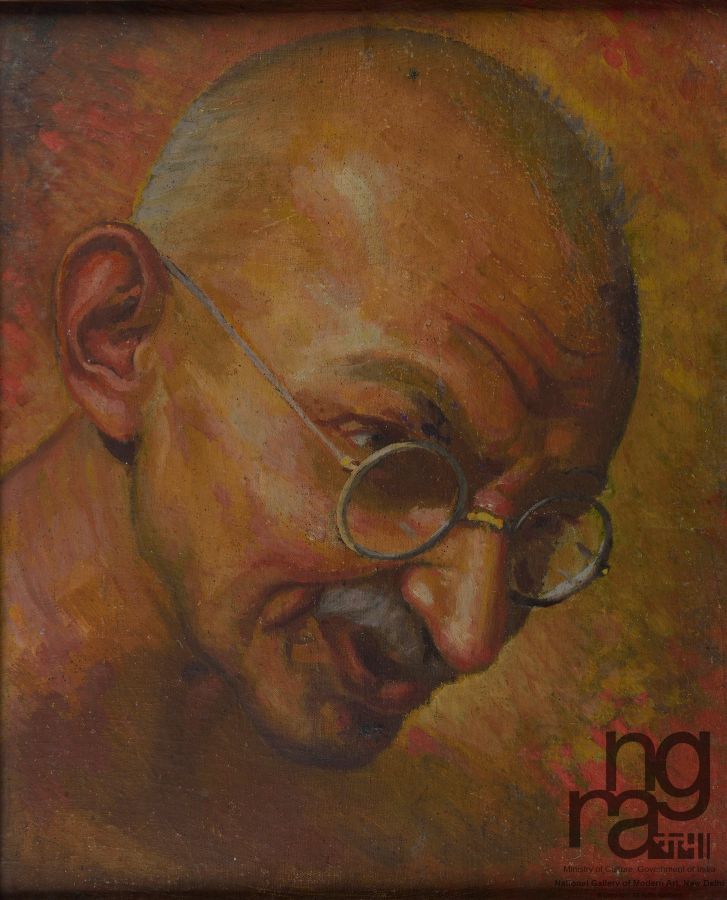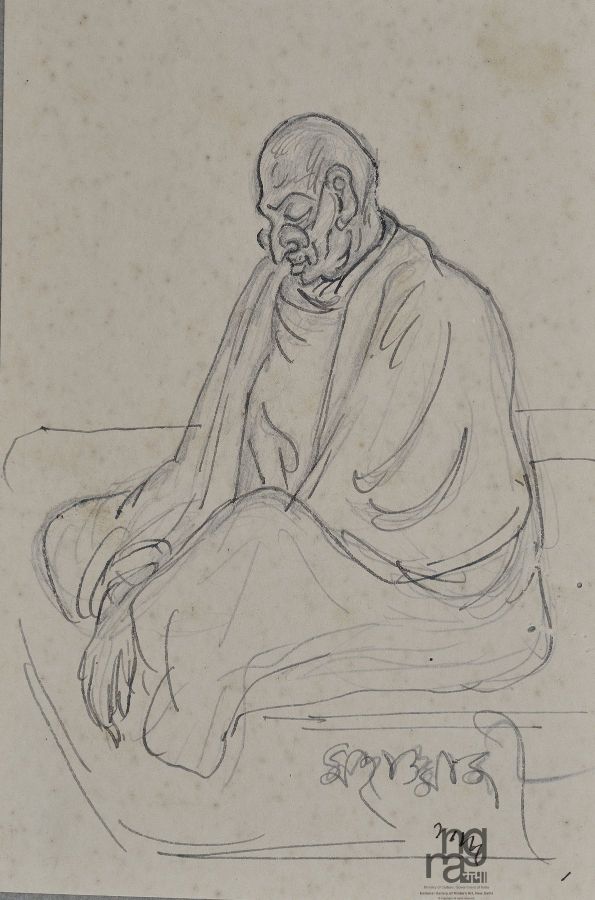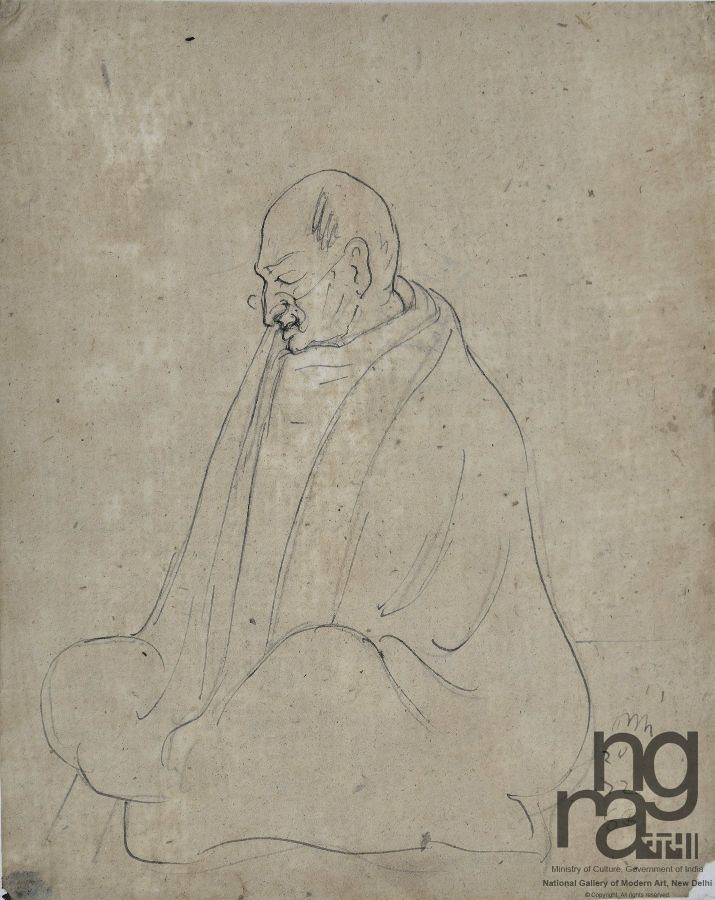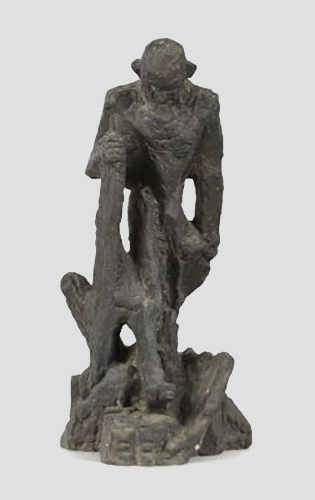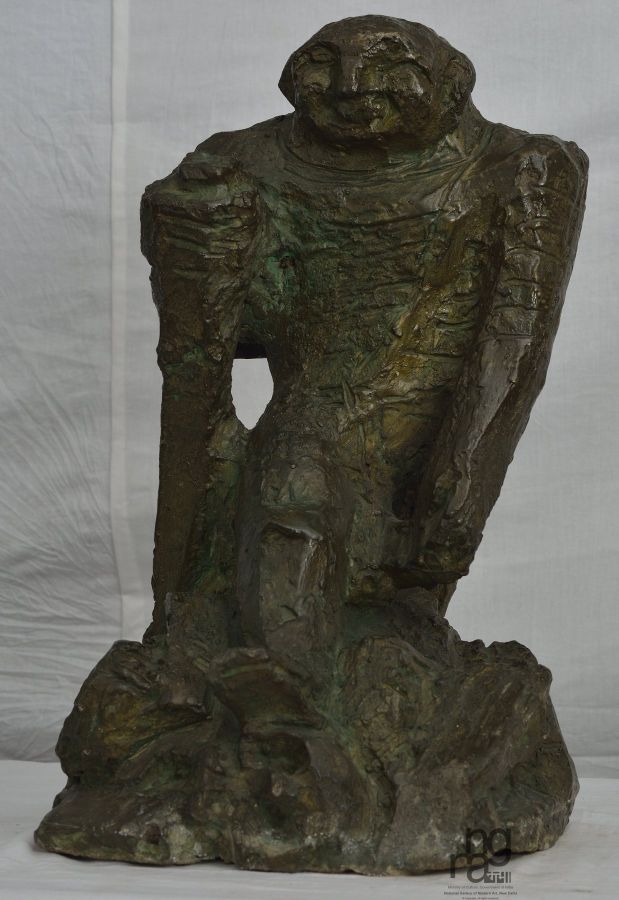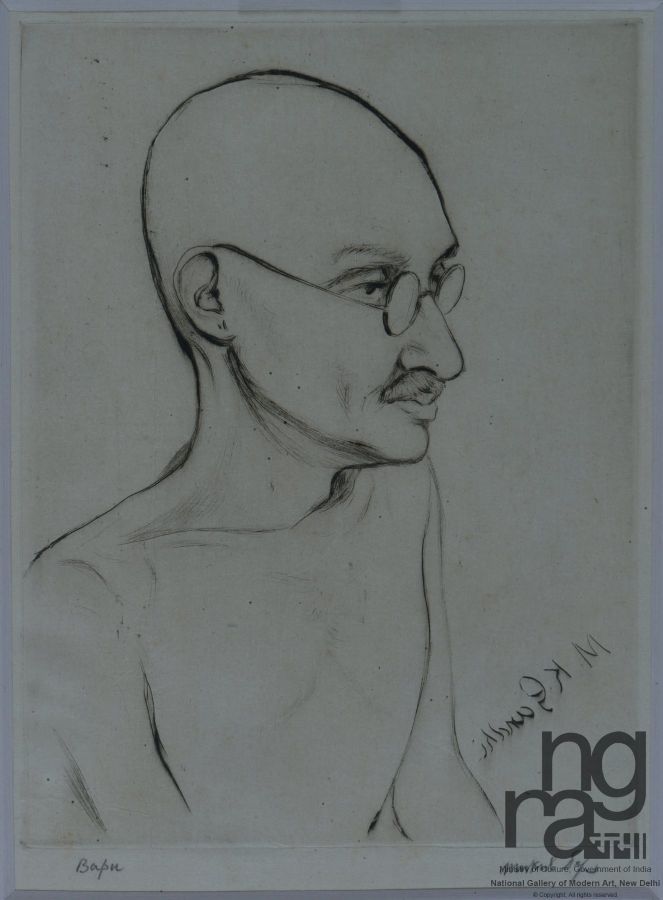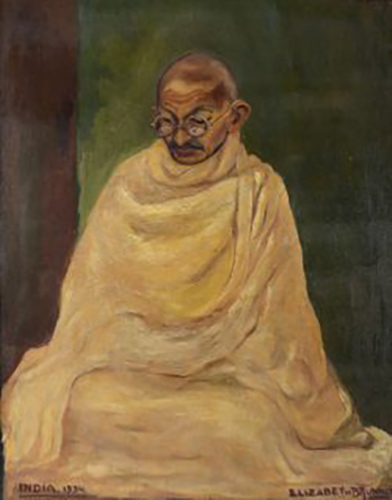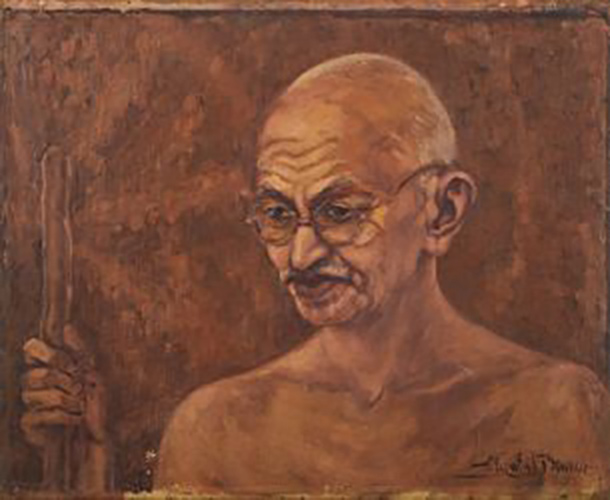Back VIRTUAL EXHIBITION | BAPU
A Tribute to Father of the Nation on his 151st Birth Anniversary and finale celebrations of 150 years of the Mahatma
Concept of BAPU
"My life is my message" said the man of the millennium and father of nation Mahatma Gandhi, whose 150th Birth Anniversary, is a celebration and obvious reason to pay homage and remembrance.
Mahatma Gandhi belongs to whole world and his life and philosophies continued to guide us in all spheres of life. Gandhi's life was a moral force that influenced many; his life and doctrine of Satyagraha inspired Nelson Mandela to wage his epic battle against apartheid and Martin Luther King for leading the civil rights movement in his country. He is an entity that brought change in world and shaped the course of history in 20th century. Mahatma Gandhi, who dedicated his entire life to the service of humanity; his and thoughts values are ever more relevant in these times of strife, reckless violence and wanton destruction.
National Gallery of modern art presents the exhibition ‘BAPU’ and pays a humble tribute to the revered persona of one of the world’s most inspiring man- Mahatma Gandhi on his 150th birth anniversary. This exhibition showcases some of the rare artworks by distinguished artists allied with Bapu and his life and philosophies deeply stimulated their life and art practices as well.
Among many contemporary artists of his times, Upendra Maharathi and Nandalal Bose were two notable Artists who were closely associated with Gandhiji and shared many of his ideals. Throughout their life, their artworks depicted the contours of India’s unique character that is so deeply colored by Gandhi’s philosophies. Gandhi invited and engaged them on different occasions to decorate the Congress assembly’s venues. Nandalal Bose decorated the Faizpur, Maharashtra assembly in 1936; Haripura in 1937 and Upendra Mahrathi at the Ramgarh Congress in 1940. Their designs were in synchronicity with the Bapus ideal and belief on art.
Gandhi's’ view on art are similar to Tolstoy's’ - "there can be no art today, unless it is an art produced by the people." Gandhi believed that, "Our people had great talents. Our way of life imbued with beauty. Our women paint on walls naturally. Our craftsmen know how to make houses. They make with their hands, everything we have in India. If we have faith in them, they can perform miracle."
During freedom struggle various movements led by Mahatma Gandhi moved masses. The Dandi March, an act of civil disobedience against tax on salt imposed by British Govt took place from March to April 1930. Thousands of Indians followed Gandhi from Sabarmati Ashram near Ahmedabad to the Arabian Sea coast, a distance of some 240 miles. Nearly 60,000 people, including Gandhi himself was arrested. This movement had great impact all across the globe and a milestone event in struggle of independence. Nandalal Bose had portrayed Gandhi on this theme several times, most iconic being BAPUJI linocut print.
Many other artists too portrayed Gandhi in his marching pose.
Gandhiji’ s life as a freedom fighter and personality attracted many of his contemporary artists from India and abroad to paint him. At times, artists got a chance to create their paintings in presence of Gandhi as a model. Though Gandhiji never liked to pose for any photograph or painting, it is inquisitive to note, how he managed to make a balance within his busy and tough schedule to keep a good connection with the artists and also encouraged them in their pursuance of art. His contemporary artists like Nandalal Bose, Mukul Dey, Upendra Maharathi, Elizabeth Brunner from Hungary, Boris Georgiev from Bulgaria, and many others drew and painted him in his presence. Many a times Gandhi ji put his Signature on his drawings and paintings on artists requests.
Bapu, the man of millennium, remained the most popular theme and subject for artists. It’s true that life and philosophies of Gandhi continue to inspire the later generation of artists all around globe.!
×
Mentors
Sh. Adwaita Charan Garnayak, Director-General
Sh. Arun Gupta, Director
Research and Concept:
Dr. Jyoti Tokas, Curator (Exhibitions)
Design & Development:
IT Cell, NGMA
Dr. Shashi Bala, Curator
S S Paul (Information Systems Manager)
Aniruddha Mukherjee (Systems Analyst)
Yogesh Vats (Systems Analyst)
Cover Design:
Kuber Raj Thapa
Videography
Bijender Kumar
←
→
-
-
Gandhiji by L.S. Rajput Acc. No. 2552 | Water colour & pencil on paper
-
Mahatma Gandhi by K.V. Vaidyanath Acc. No. 145 | Oil on canvas
-
Carpentar, 1937 by Nandalal Bose Acc. No. 4849 | Tempera on Paper
-
Potter, 1937 by Nandalal Bose Acc. No. 4854 | Tempera on Paper
-
Paper Making, 1937 by Nandalal Bose Acc. No. 5003 | Tempera on Paper
-
Wool Spining, 1937 by Nandalal Bose Acc. No. 4851 | Tempera on Paper
-
Blacksmith, 1937 by Nandalal Bose Acc. No. 5028 | Tempera on Paper
-
Labourer woman of Jaipur Acc. No. 14039 | Water colour on Paper
×
The Mahatma and his ideals had a great influence on Maharathi. The formative years of Maharathi's art practices and images painted by him will testify this. With his creed of 'Ahimsa' and his emphasis on the revival of the village economy.
-
Blacksmith Acc. No. 14035 | Water colour on Paper
-
Gandhi By Upendra Maharathi Acc. No. 14055 | Oil on board
×
Maharathi exhaustively painted the Mahatma, capturing him in his many moods. Upendra Maharathi was specialized in various western and Indian techniques of art and mediums. He mastered the academic portraiture and executed many realist portraits of notable personalities including those of Mahatma Gandhi. His excellence is notable in capturing the expressions and gaze of Mahatma in his various portraits.
-
Gandhi Profile by Upendra Maharathi Acc. No. 14056 | Oil on canvas
-
Gandhi and People Gathering by Upendra Maharathi Acc. No. 14477 | Black ink brush on paper
-
Fate of three great Men, Gandhi, Buddha, Christ by Upendra Maharathi Acc. No. 14028 | Water colour
×
Maharathi was deeply saddened by his death and in this particular painting he freeze his moment of death and painted him with Jesus Christ and Buddha revering him to their level.
-
Bloody Sunset by Upendra Maharathi Acc. No. 14007 | Tempera on paper
-
A sketch from album No-49 by Nandalal Bose Acc. No. 8304 | Pen & pencil on postcards
×
Nandalal bose was very close to Mahatma and also got support by Gandhi. His closeness to Mahatama also led him to sketch him more often. Nandalal once expressed that "Mahatmaji may not be an artist in the same sense that we professional artists are, nevertheless I cannot but consider him to be a true artist. All his life, he has spent in creating his own personality and in fashioning others after his high ideals. His mission is to make Gods out of men of clay. I am sure his ideal will inspire the artists of the world.”
-
A sketch from album no-44 by Nandalal Bose Acc. No. 8067 | Pen & pencil on postcards
-
Dandi March(Bapuji) by Nandalal Bose Acc. No. 4893 | Linocut Print
×
During freedom struggle various movements led by Mahatma Gandhi moved masses. The Dandi March, an act of civil disobedience against tax on salt imposed by British Govt took place from March to April 1930. Thousands of Indians followed Gandhi from Sabarmati Ashram near Ahmedabad to the Arabian Sea coast, a distance of some 240 miles. Nearly 60,000 people, including Gandhi himself was arrested. This movement had great impact all across the globe and a milestone event in struggle of independence. Nandalal Bose had portrayed Gandhi on this theme several times, most iconic being BAPUJI linocut print. Many other artists too portrayed Gandhi in his marching pose.
Bapuji by Nandalal Bose, is the most iconic image of 20th century of Gandhi and this print by Nandalal Bose demonstrated the power of mass medium (print making) to mobilize the masses. It was this image by Nandalal Bose that revealed that mere image of Gandhi had a potential to collect people together.
-
A Sketch in Album no-23 by Nandalal Bose Acc. No. 7487 | Pencil and water colour on postcard
-
Gandhi, Dandi March 2 by Ram Kinker Baij Acc. No. 4448 | Bronze
×
The sculpture, Dandi-March by artist Ramkinker Baij is yet another iconic piece in NGMAs’ collection. This bronze sculpture depicting Gandhi in mid-stride, walking determinedly during the historic Dandi March, is an example of Ramkinkar Baij’s fluid and diverse styles as sculptor.
it was originally conceived and executed in 1948 as a series of small but significant sculptures but casted in 1970s,. The series of sculptures DANDI MARCH intensifies Gandhi’s stature as an icon of Peace made in Bronze cement and plaster of paris are conceived just after Gandhi’s assassination. Ramkinkar Baij portray Gandhi in unconventional forms, the works in this series are considered one of the most powerful representations of the national leader. A large-scale installation of its another version situated at the Kala Bhavan in Santiniketan.
-
Gandhi Dandi March 1 by Ram Kinker Baij Acc. No. 4446 | Cement
-
Mahatma Gandhi by Mukul Dey Acc. No. 1478 | Etching Print
×
Mukul Dey famous for his splendidly executed portraits and his contribution to print that was signed by him in Guajarati. Ten years later he again met him for making first met Gandhiji in 1918. He took his consent for a portrait, after completion his portraits in Sabarmati Ashram and did few drawings before he could actually work in his desired medium of dry point. This drawing of Mahatma Gandhi by Mukul Dey in NGMAs collection was captured at Sabarmati Ashram and also bears his signature.
-
Mahatma Ji Sping Charkha at Sabarmati Ashram by Mukul Dey Acc. No. 1479 | Print on paper
-
Portrait of Gandhiji, 1934 by Elizabeth Brunner Acc. No. SA-01 | Oil on Canvas
×
The Gandhiji in meditation pose is painted by Elizabeth Bruner in 1934. She was a Hungarian artist spent her entire life in India.
The calmness of his face is siren and captured beautifully by the artist. She portrayed him to be a very humane, sensitive and a spiritual person. She was among those artists who worked with Gandhiji and painted his live portraits for us and progeny.
-
Portrait of Gandhiji, 1948 by Elizabeth Brunner Acc. No. SA-02 | Oil on Canvas
-
Mahatmas’ Silent Day, 1948 by Elizabeth Brunner Acc. No. 16404 | Oil on Canvas
×
In her portraits, she painted inner reflections of Mahatma Gandhi. These portraits capture the simplicity and serenity of Mahatma Gandhi in meditation at Sabarmati Ashram.
-
Portrait of Mahatma Gandhi, 1935 by Boris Georgiev Acc. No. 3000 | Colour pencil on board
×
Boris Georgive a Bulgarian painter was an excellent portraitist and famous for a fresco portrait of Cardinal Merry del Val in the Sacristy of St Peter's Church in Rome. He spent considerable time in 1935 with Gandhiji in his ashram at Sabarmati and had developed a close friendship. During this period he executed his notable and famous portraits of Gandhiji. This portrait executed in 1935, signed by Gandhiji himself and a proud possession of NGMA collection.
-
Model of Gandhiji By Fredda Brilliant Acc. No. 3392 | Bronze
×
Freda Brilliant, Polish sculptor who worked in a variety of mediums. Her most famous work is a bronze statue of Mahatma Gandhi which is the centerpiece of the park in Tavistock Square, London, UK. It is interesting to note that original idea behind this sculpture actually take root in 1949 when she was asked to work for a Gandhi Memorial near Rajghat by J.L. Nehru.
These two Gandhi statues of bronze by her in NGMA collection are actually Maquettes ( the original model created prior to a larger and well-known version) submitted to the Gandhi Memorial Committee, New Delhi. Unfortunately, this memorial could not materialize due to lack of money but the idea didn’t die here and was later further developed for statue of Mahatma Gandhi as a centerpiece of the park in Tavistock Square, London, UK.
This sculpture portrays Gandhi in his later years, sitting in a contemplative pose, with legs crossed in the lotus position and his left hand resting on his ankles.
-
Model of Gandhiji By Fredda Brilliant Acc. No. 3478 | Bronze
×
To synthesize his life in a sculpture Freda read many volumes by Tendulkar on Gandhi and contemplated a lot to get acquainted with his views in year 1949. “ In all 20 years elapsed from start to finish on making my monument to Mahatma Gandhi” she said.
-
Mahatma GandhI BY Ram V Sutar Acc. No. 14634 | Bronze
×
Padamshree Sculptor Ram v. Sutar is Famous for his large scale portrait sculptures mainly of Gandhi and other nationalist leaders.
This sculpture of Gandhi is casted in bronze and shown him in a contemplative pose where his eyes are close and head is little tilted downward in Dhyan mudra. Its known fact that Dhyan and meditation are regular practices of Gandhi and many artists love to showcase his siren pose.
-
S.G Shrikande Hey Ram Acc. No. 15110 | Bronze
×
The sculpture ‘Hey Ram’ of Mahatma, casted in bronze, is homage to him and suggests the event of his death. He is shown with his eyes close having calmness on his face and the presence of garland of monkeys touching his face is suggestive intimacy with the subject.
|
